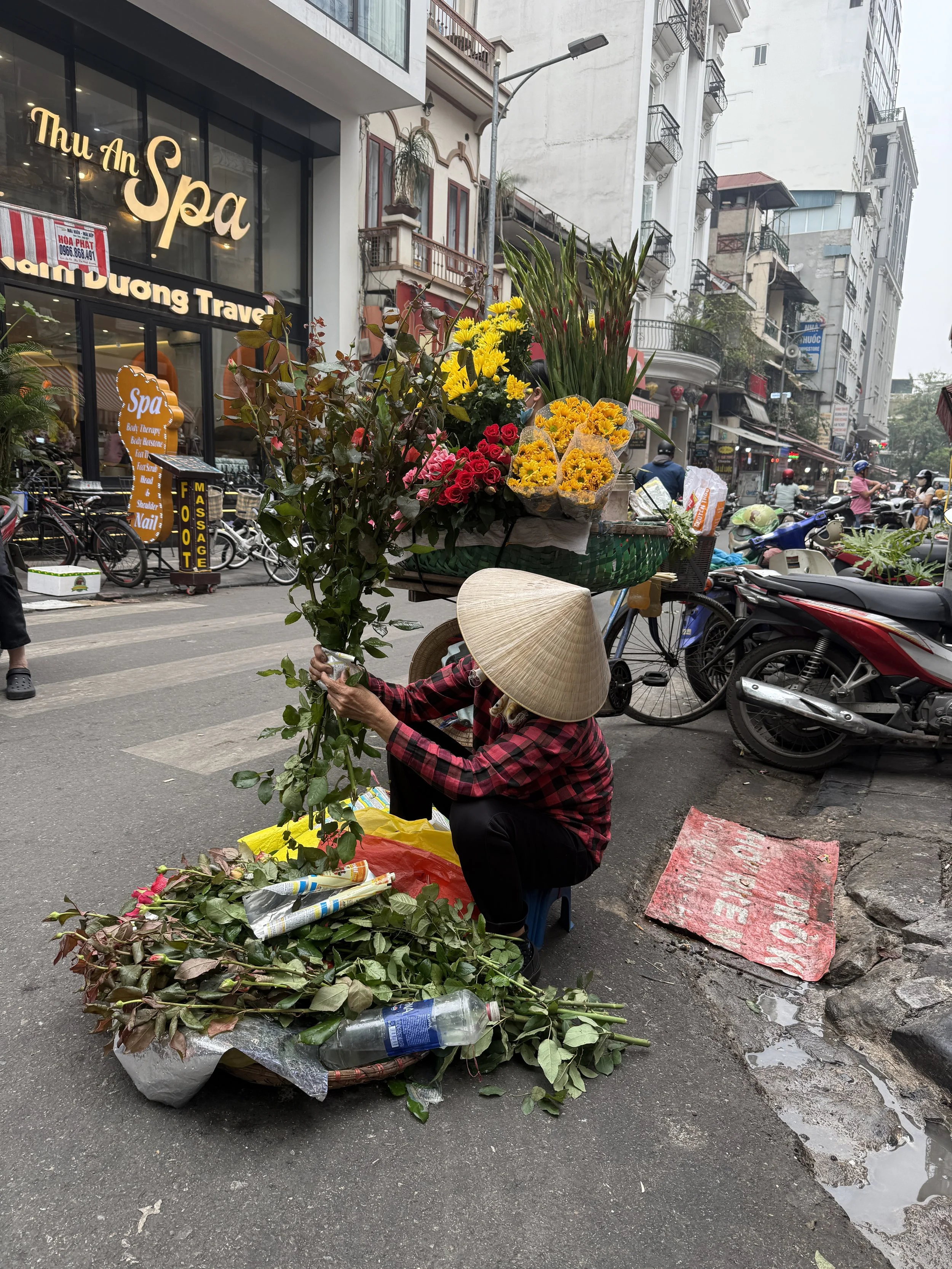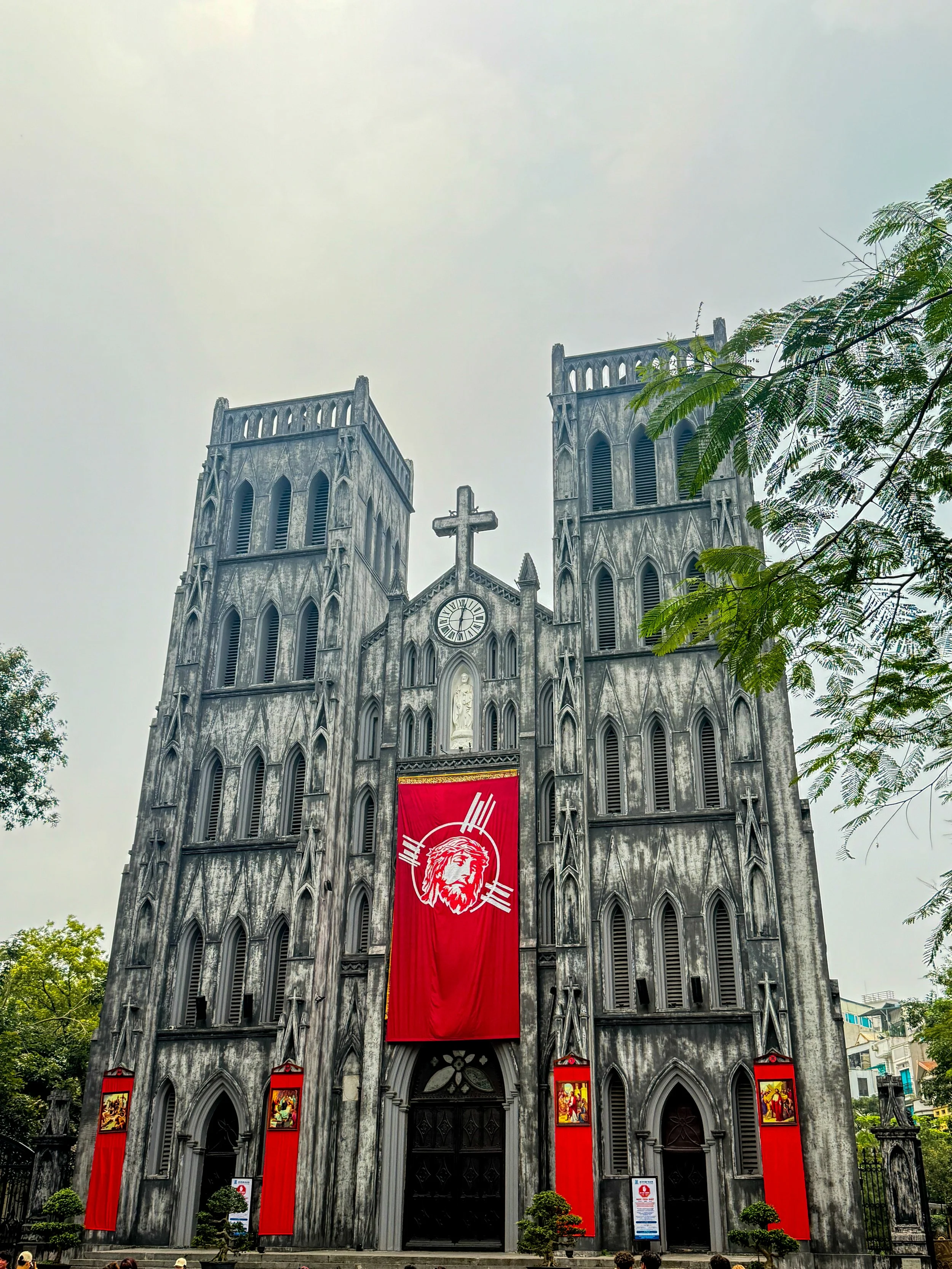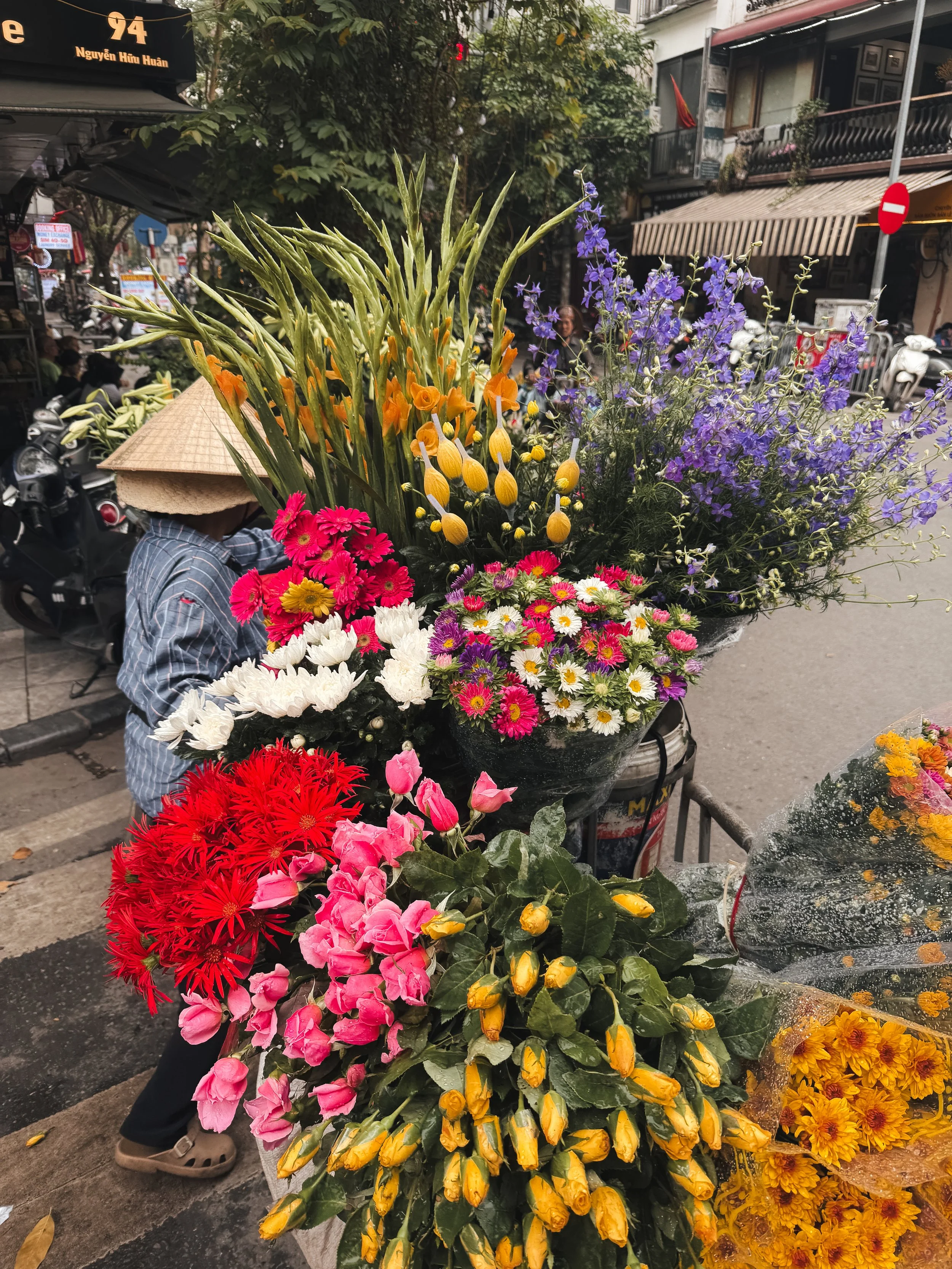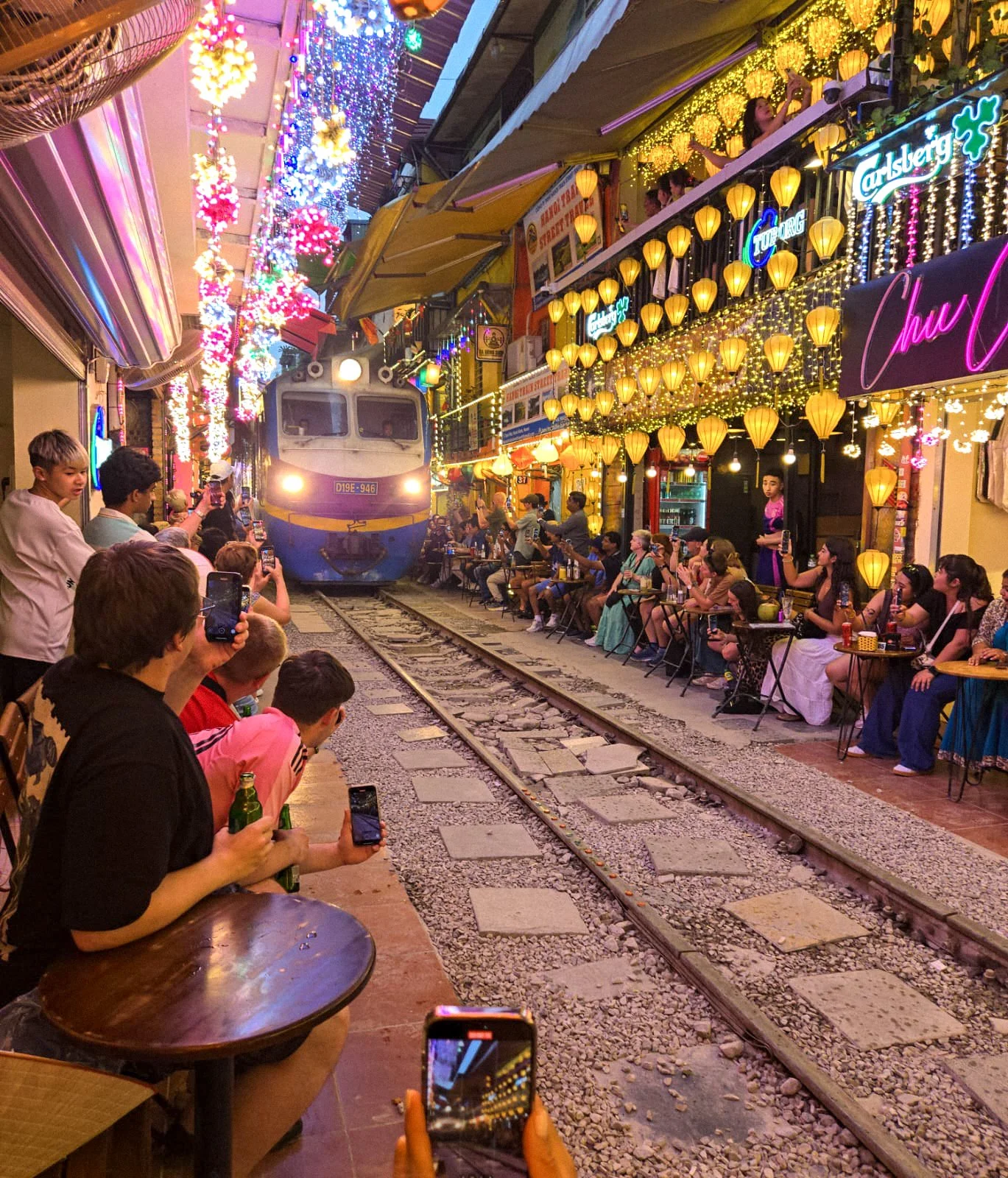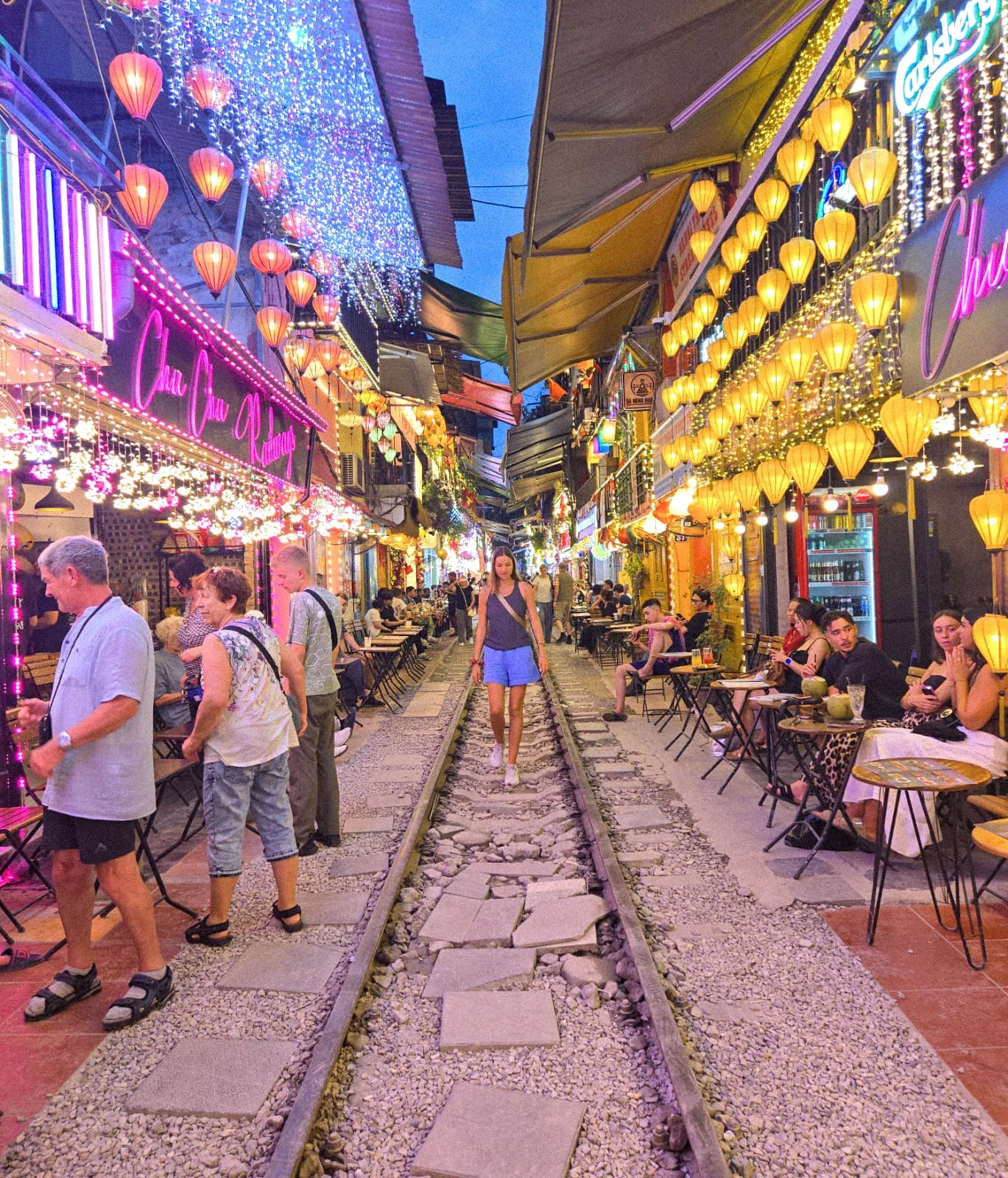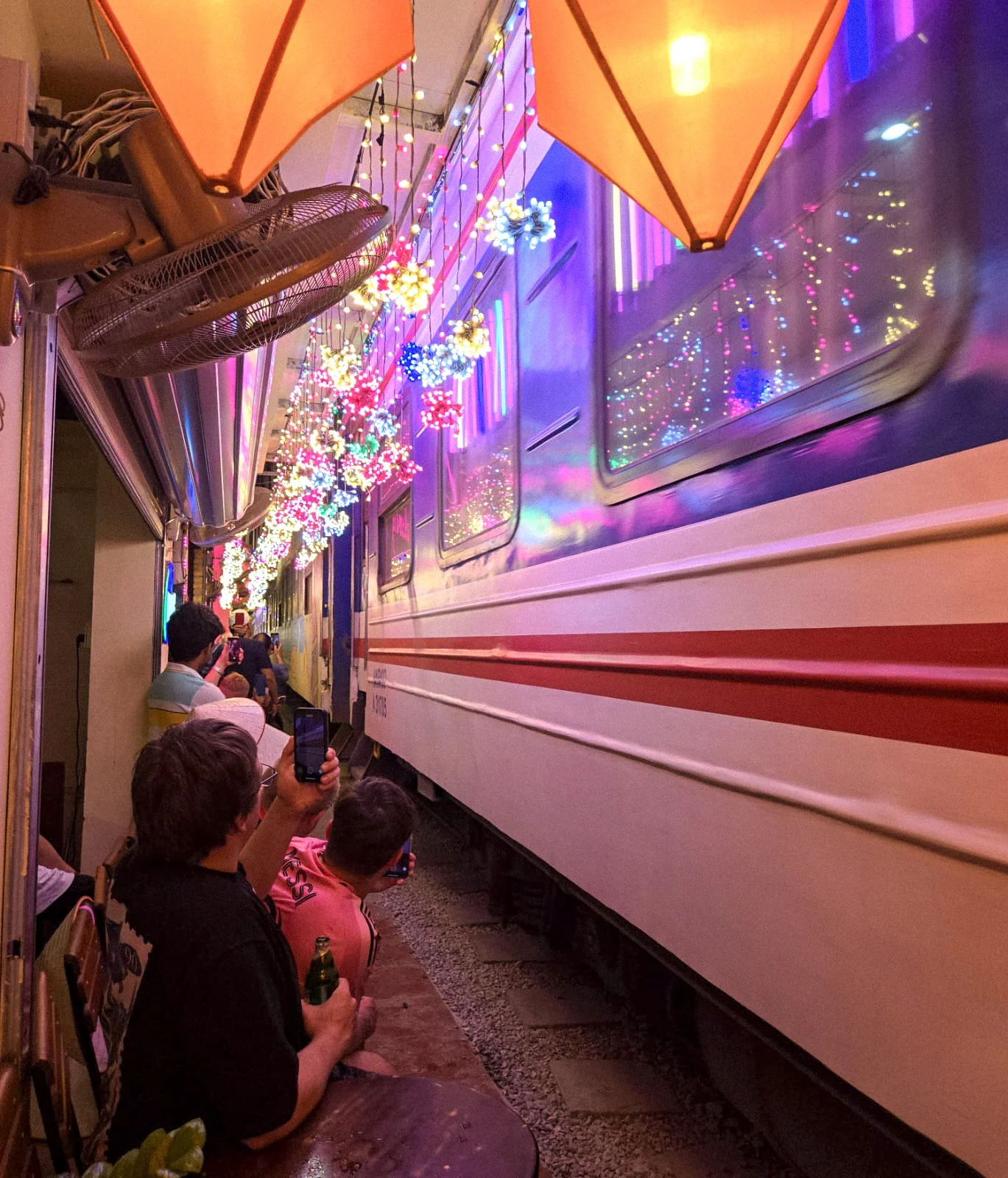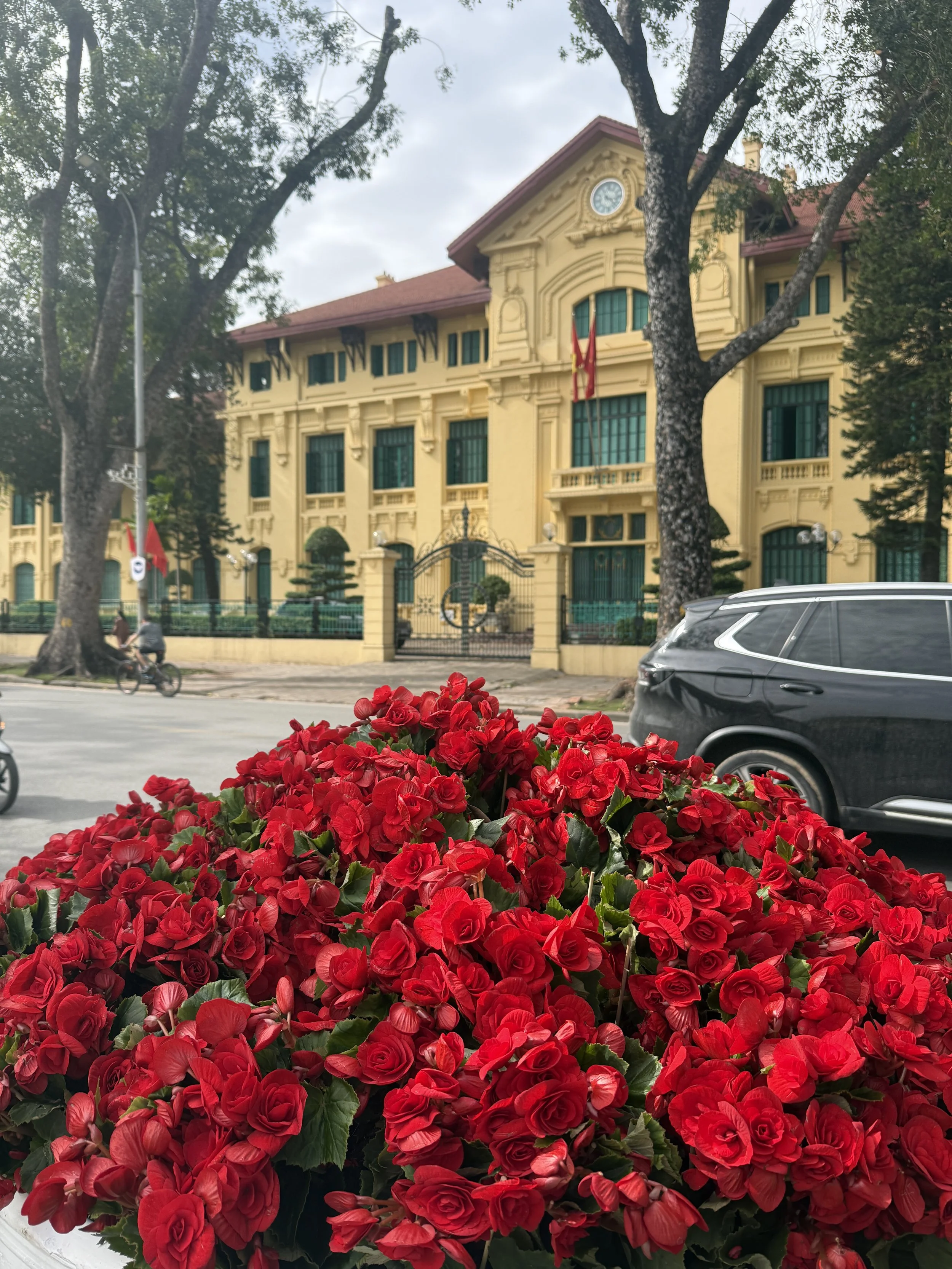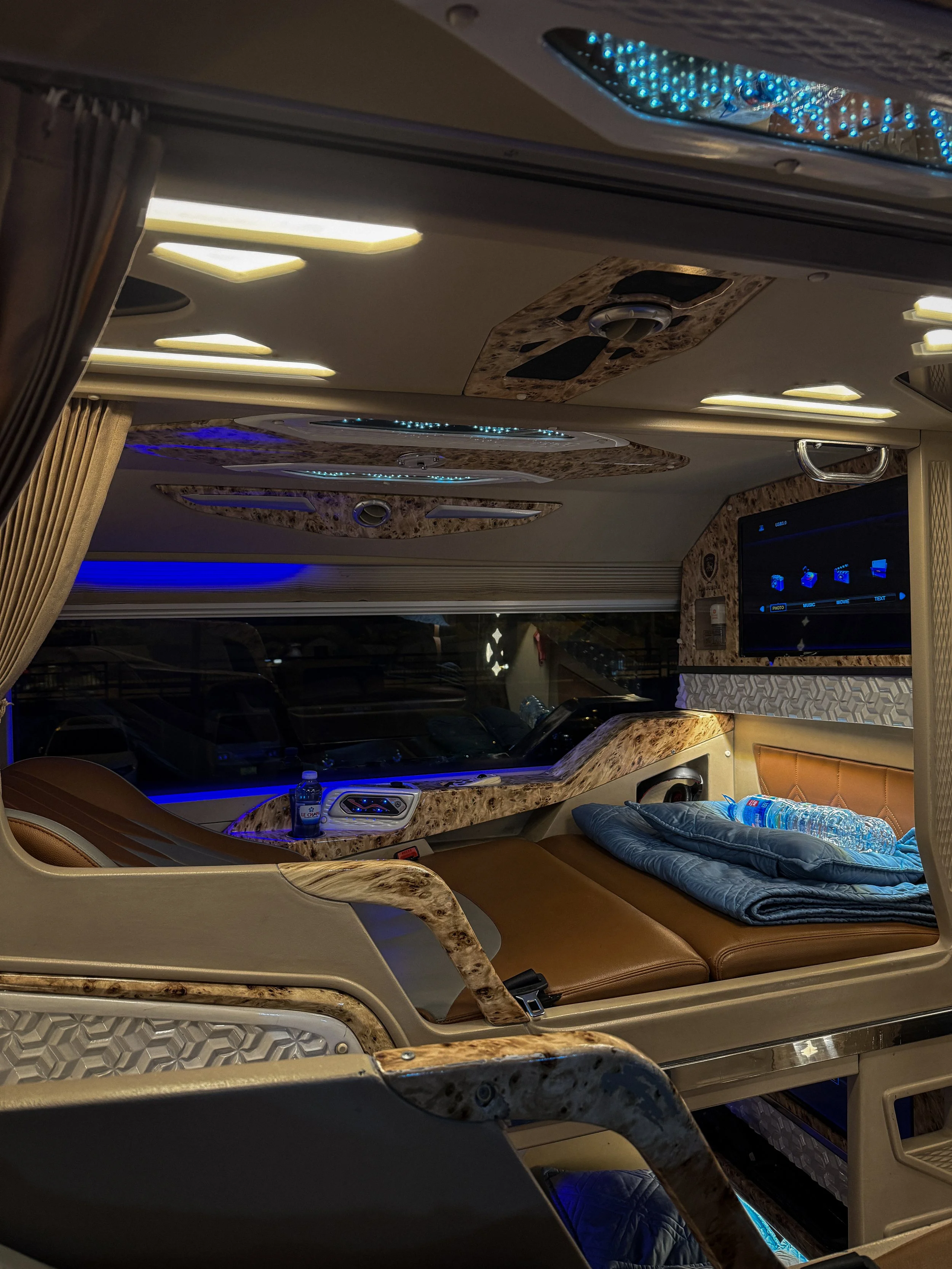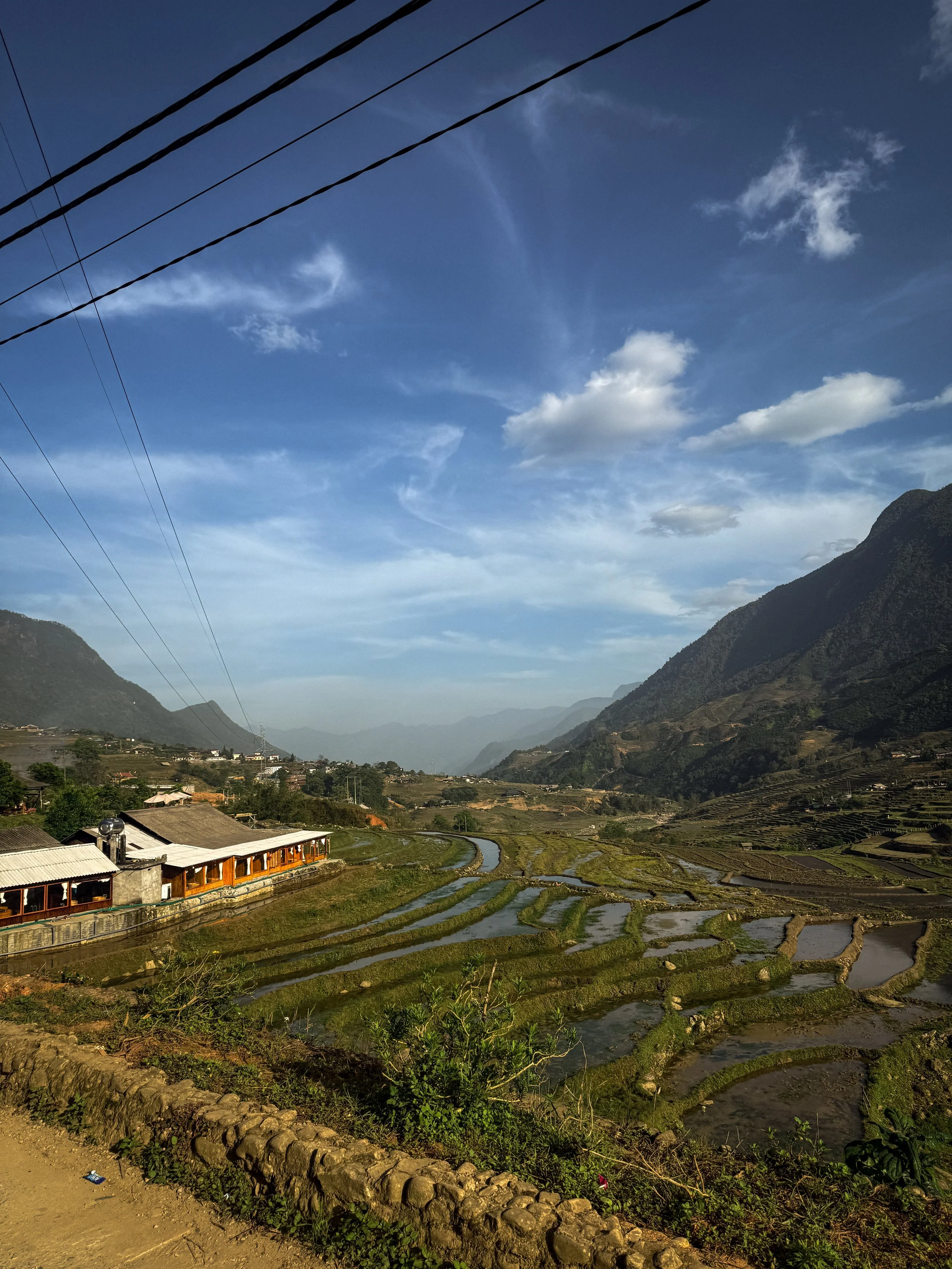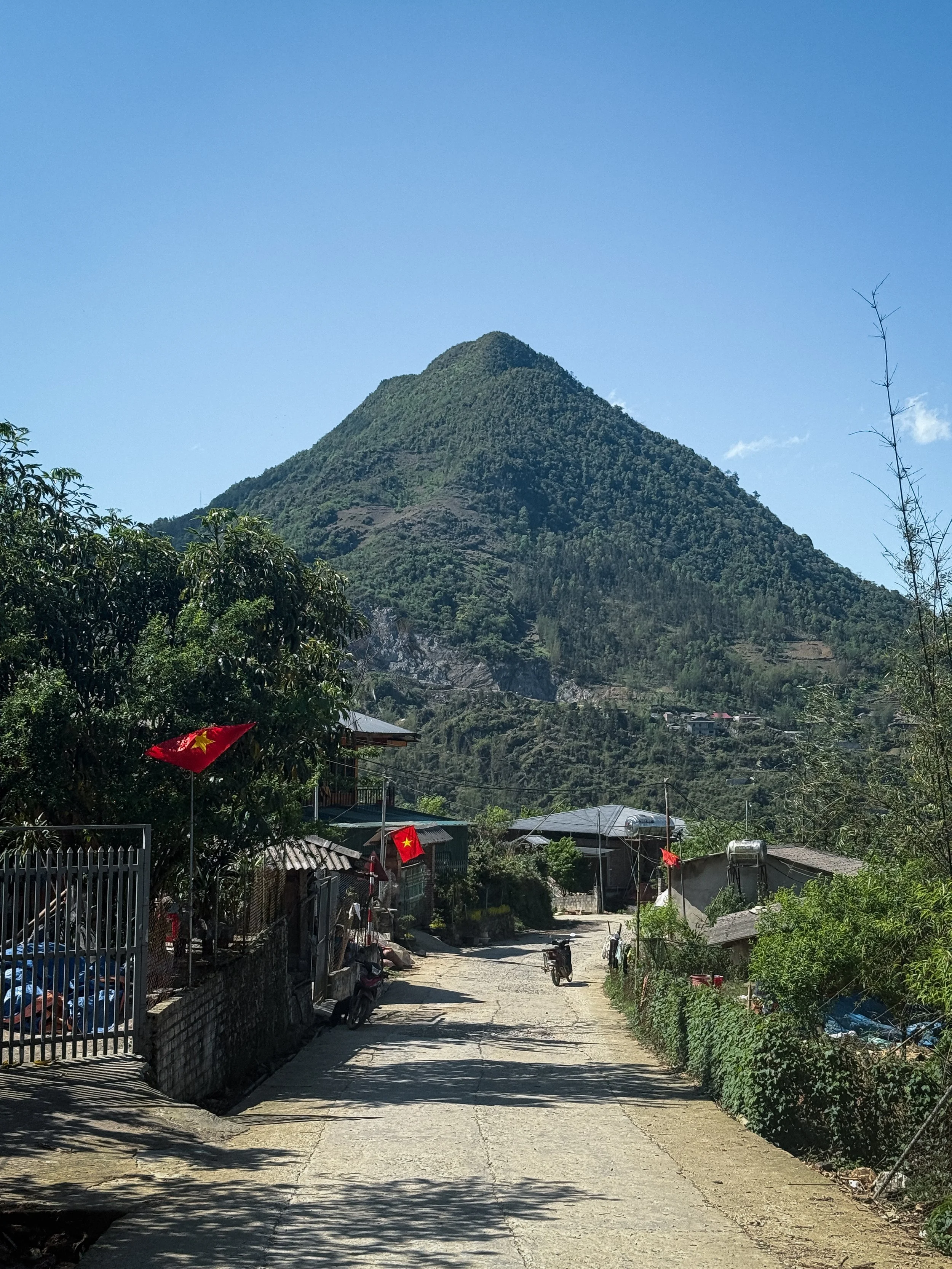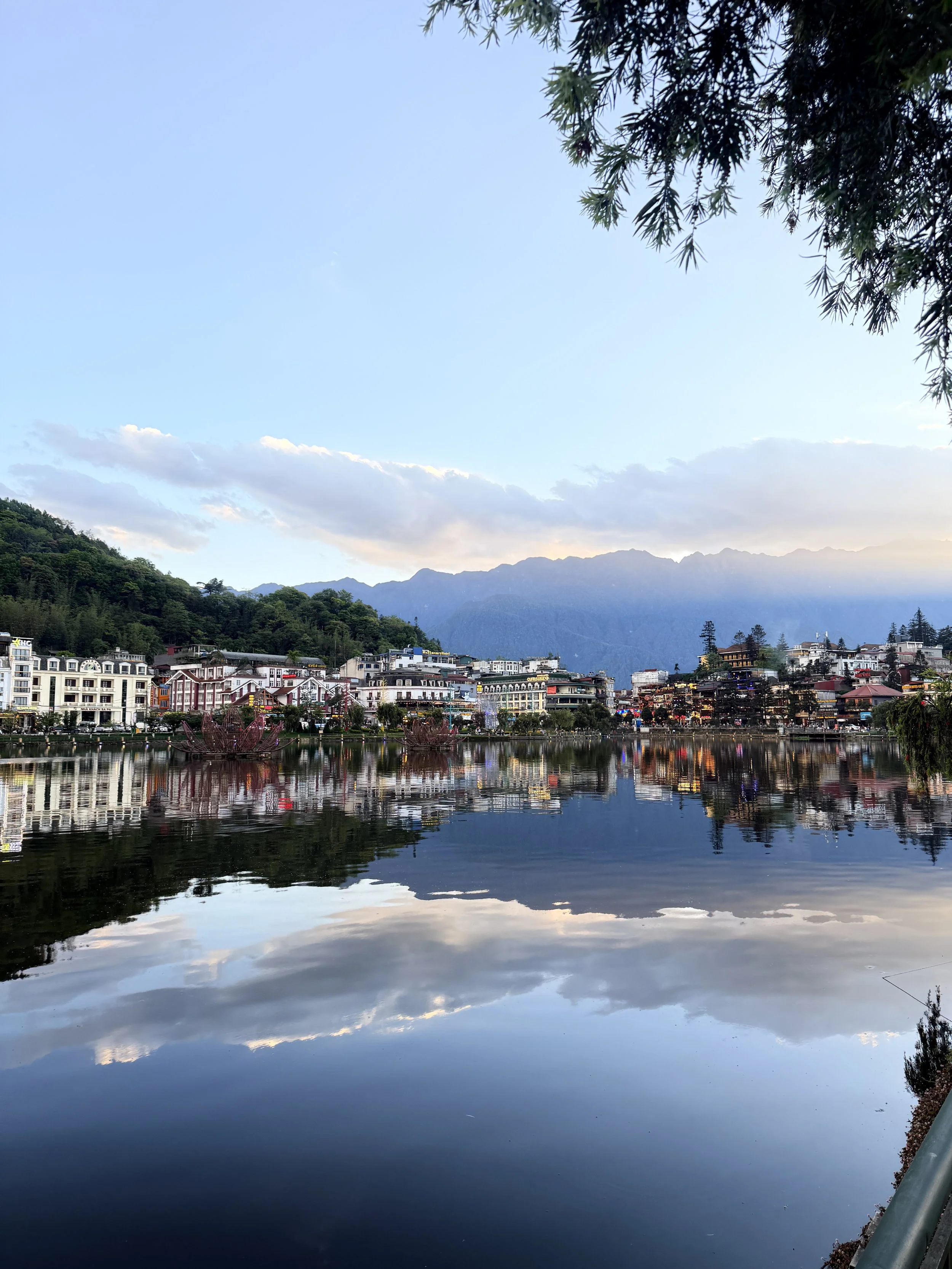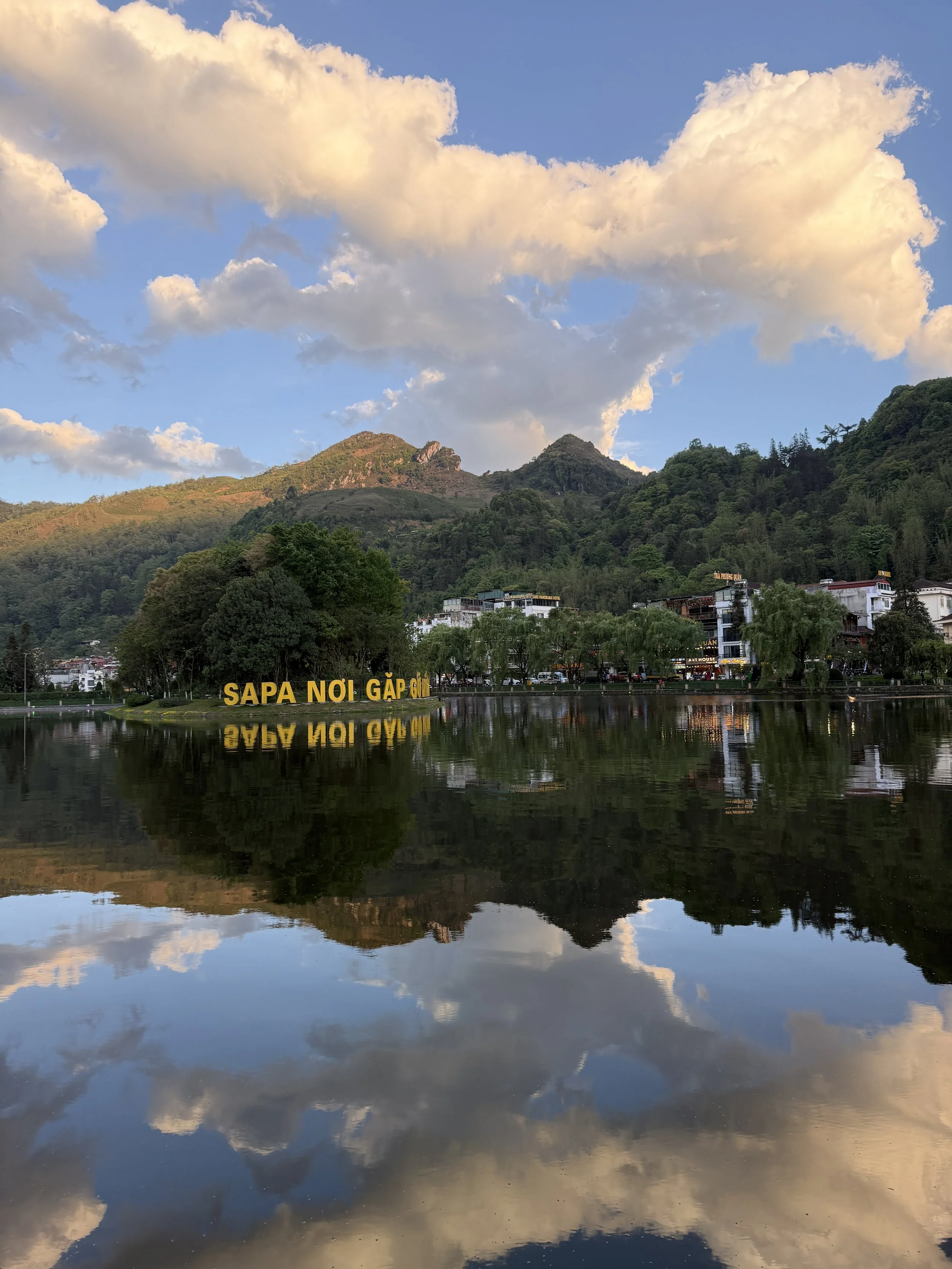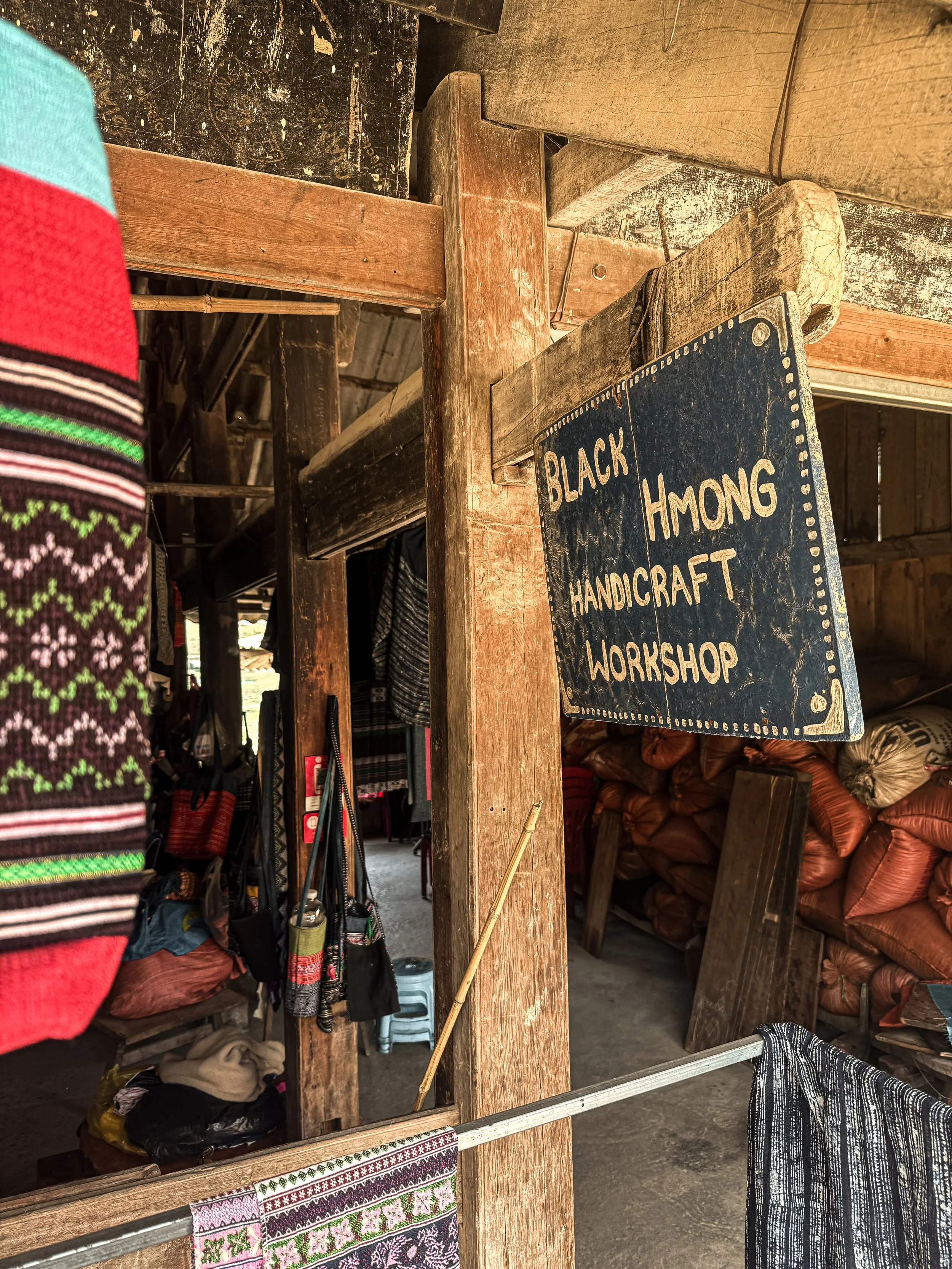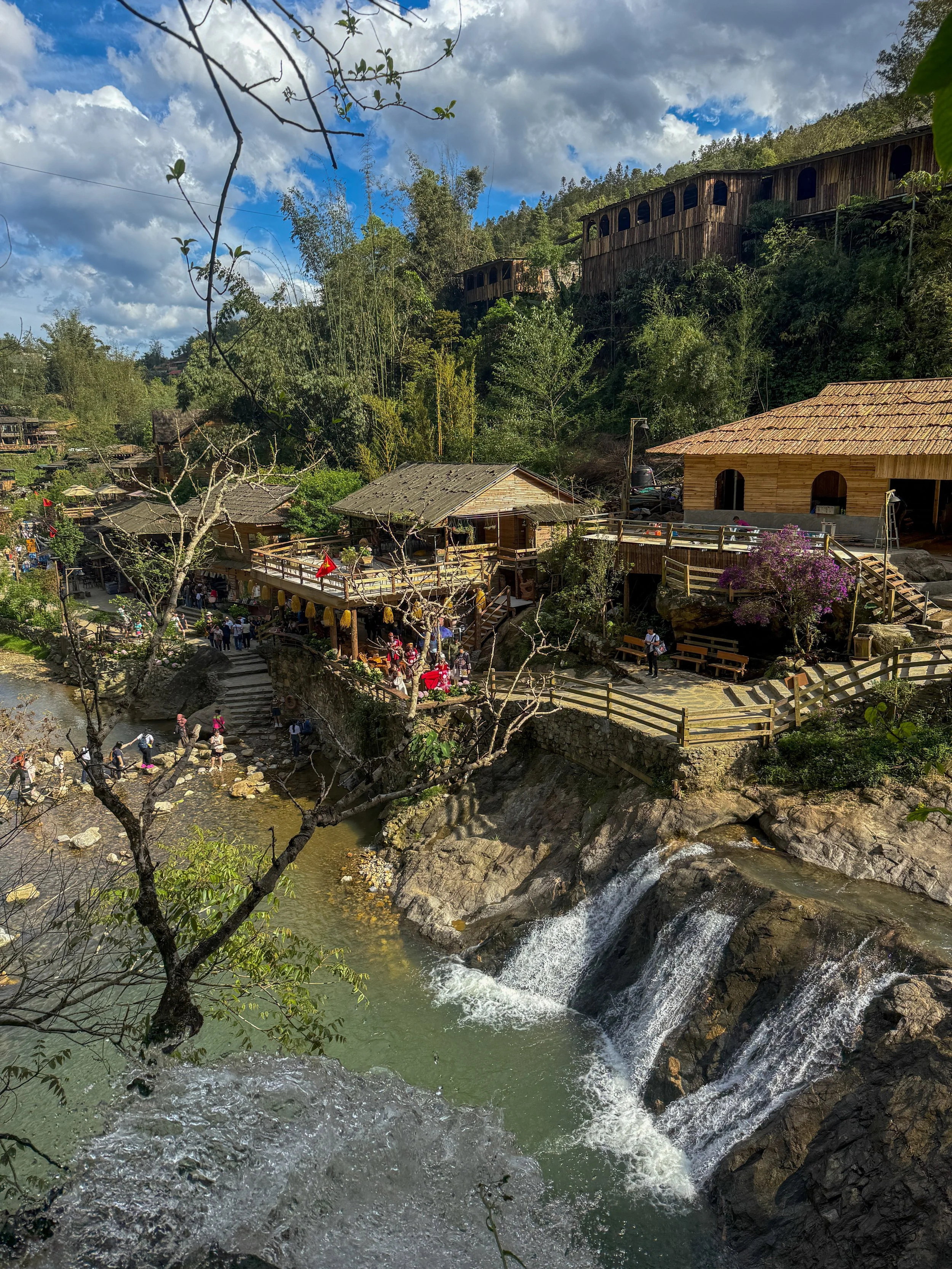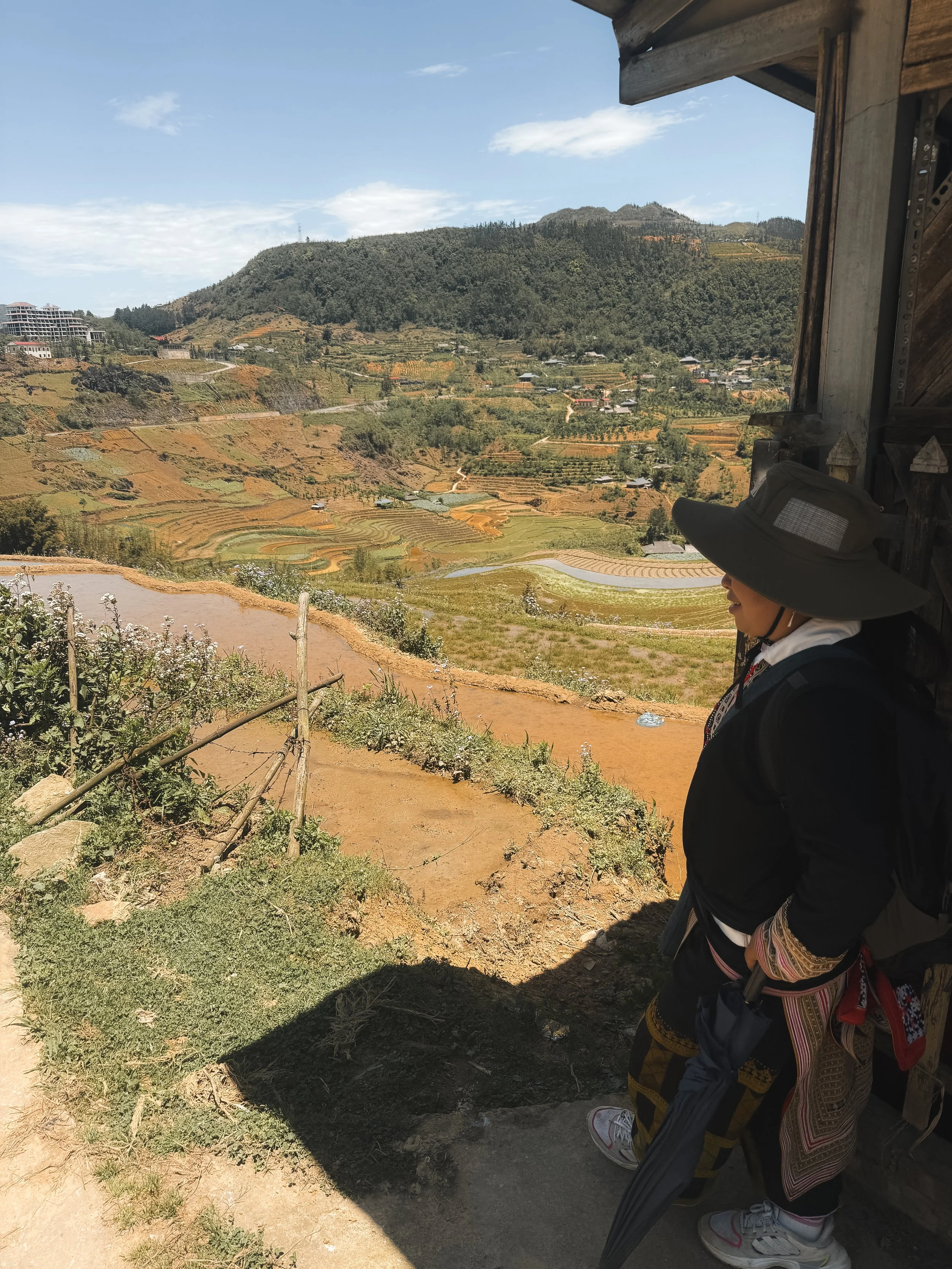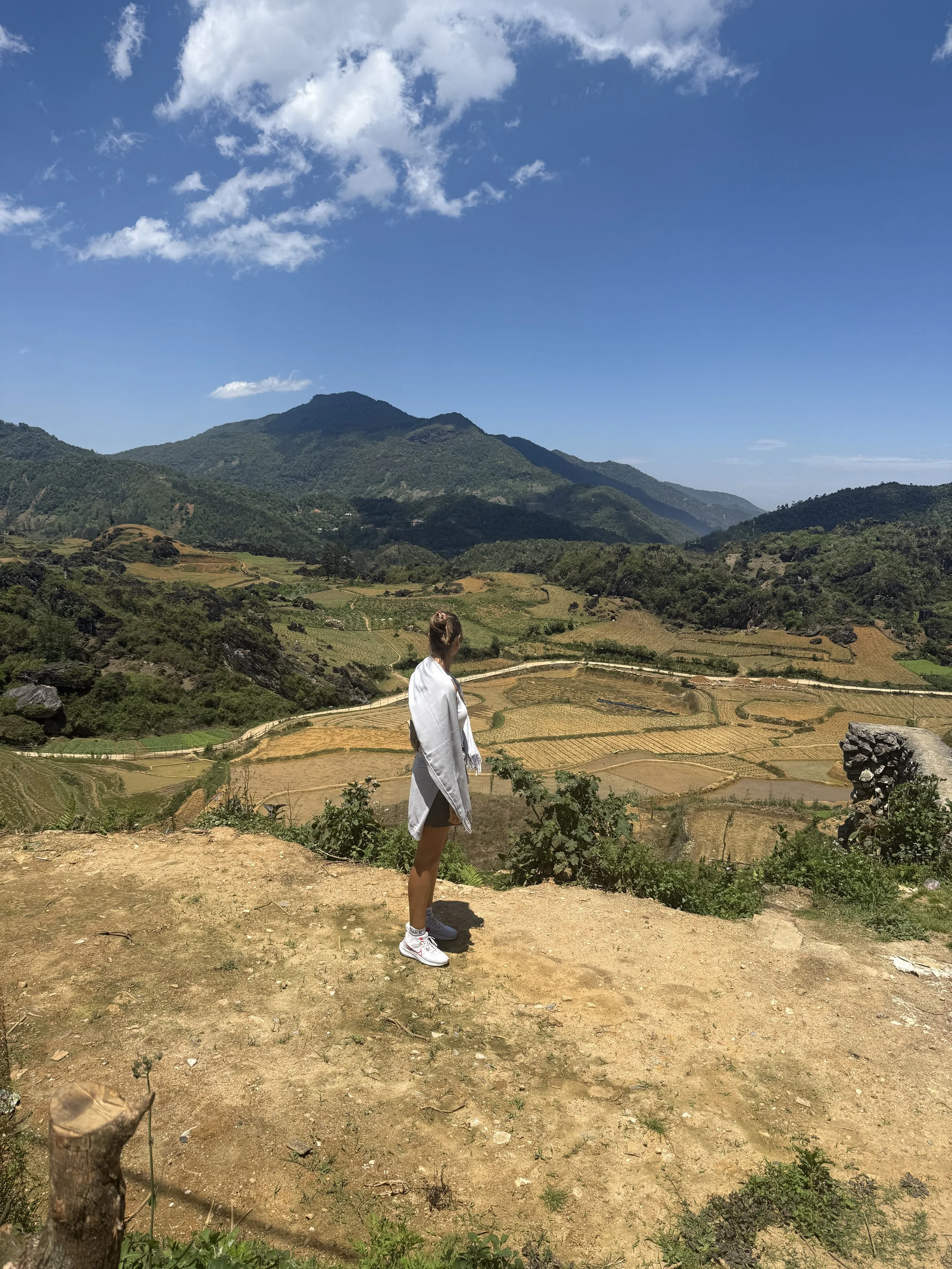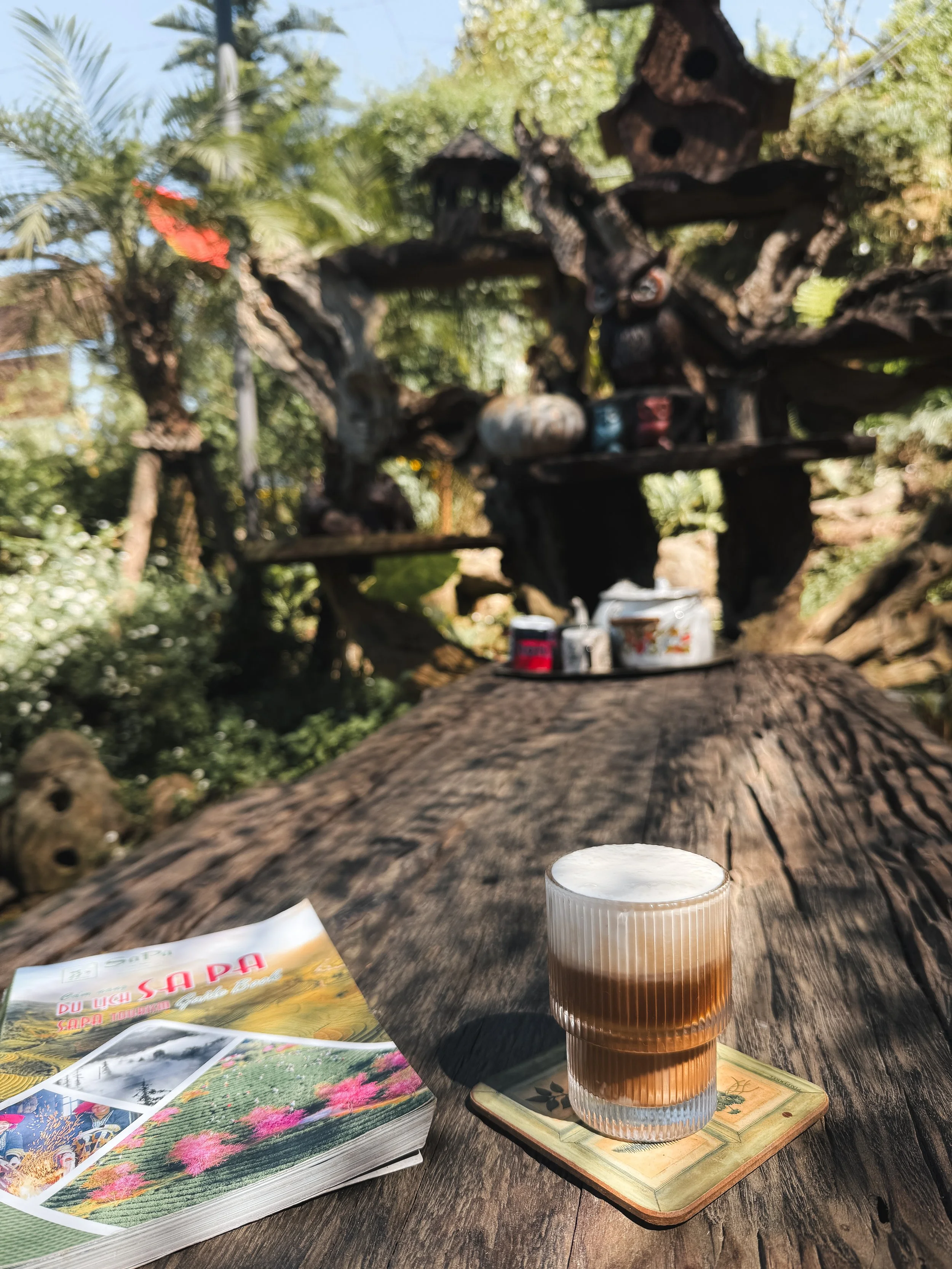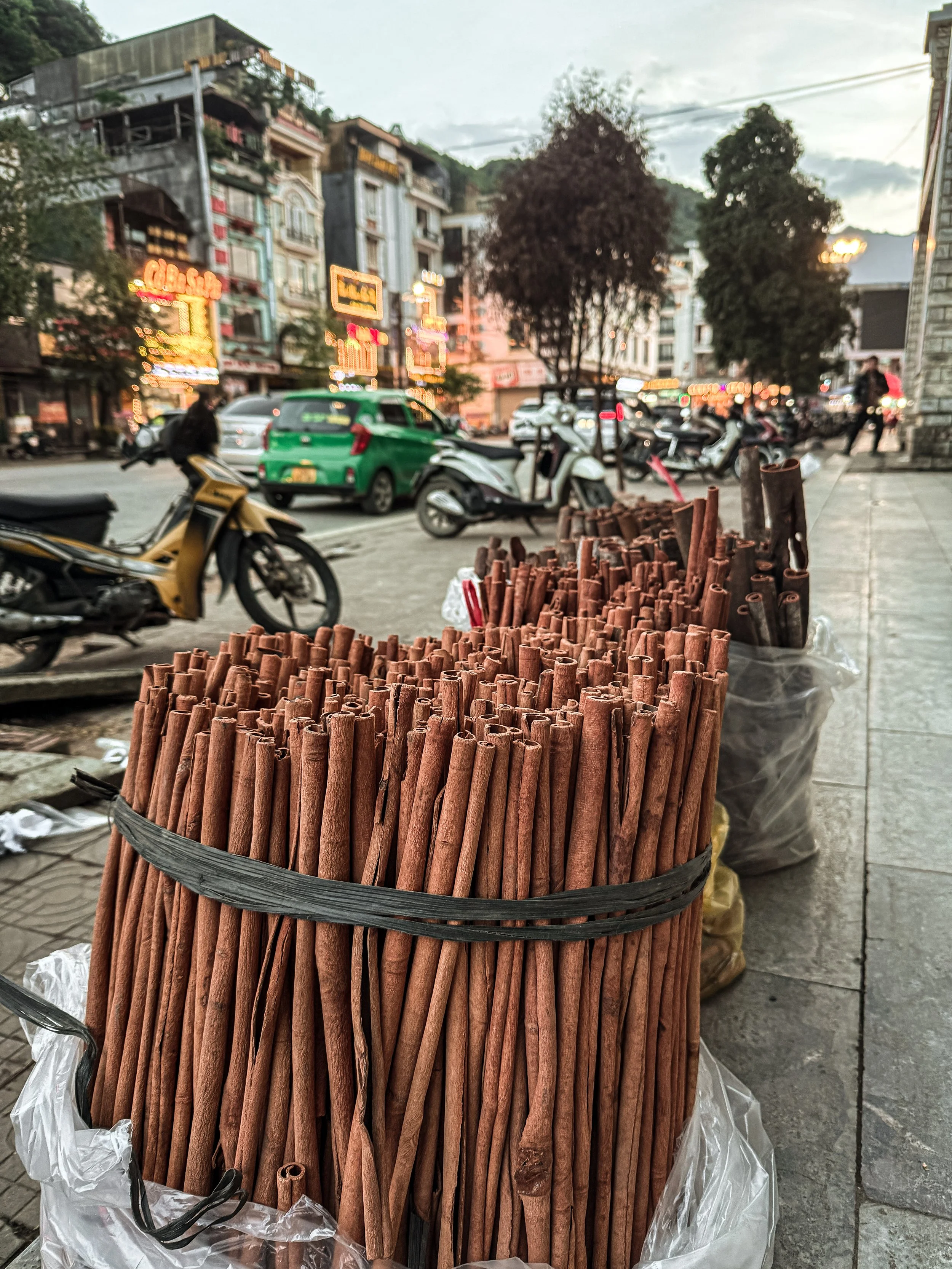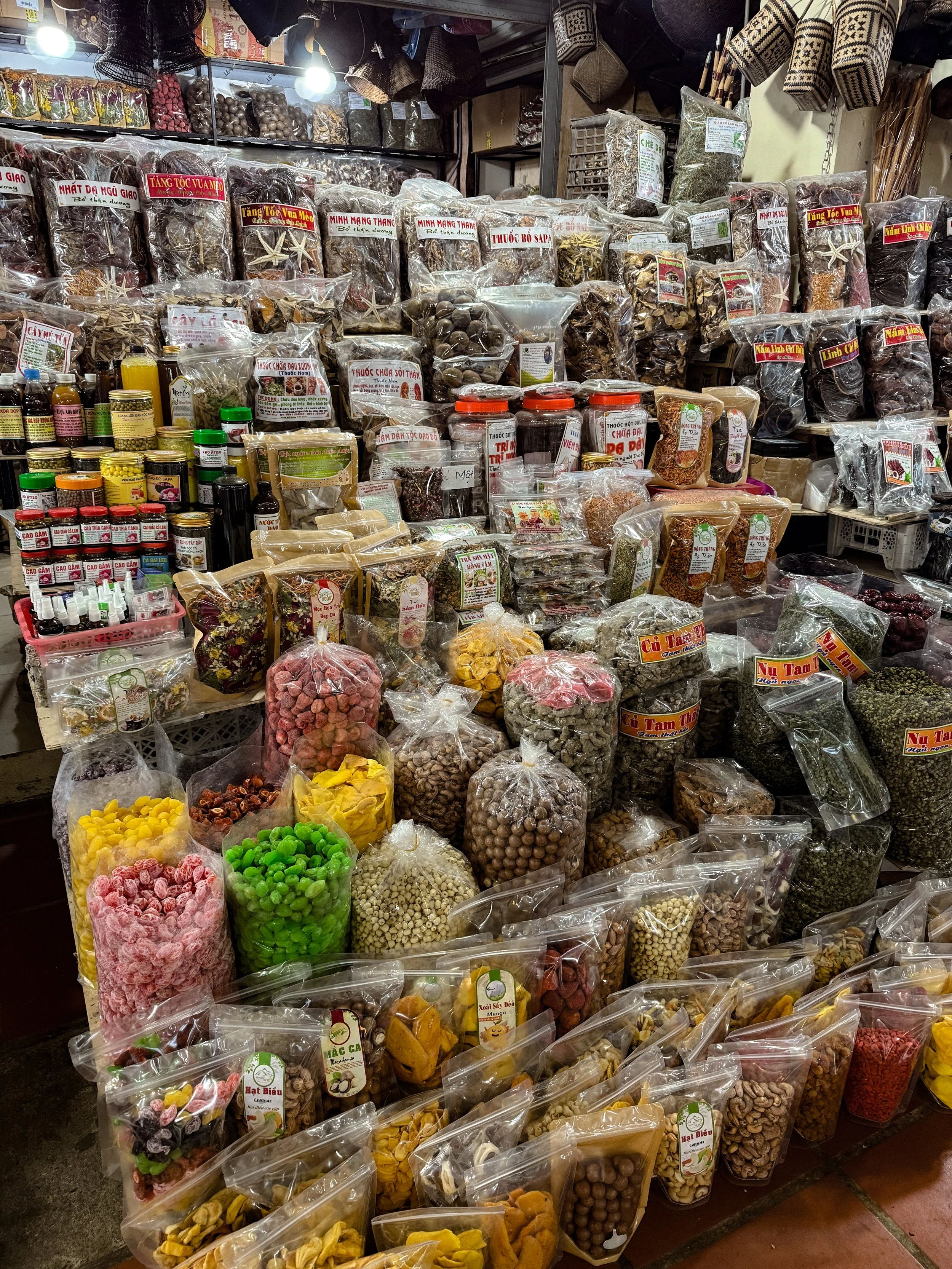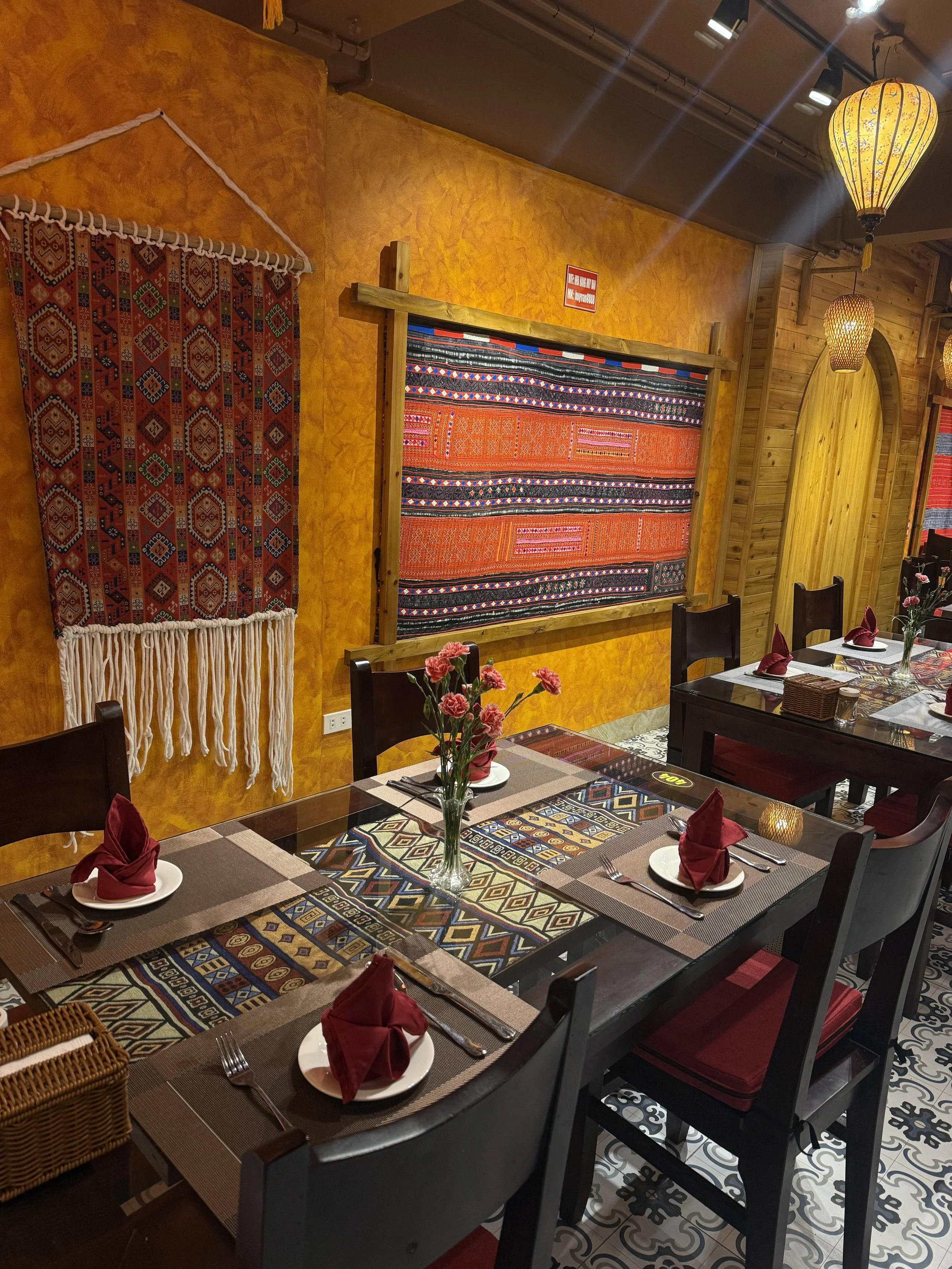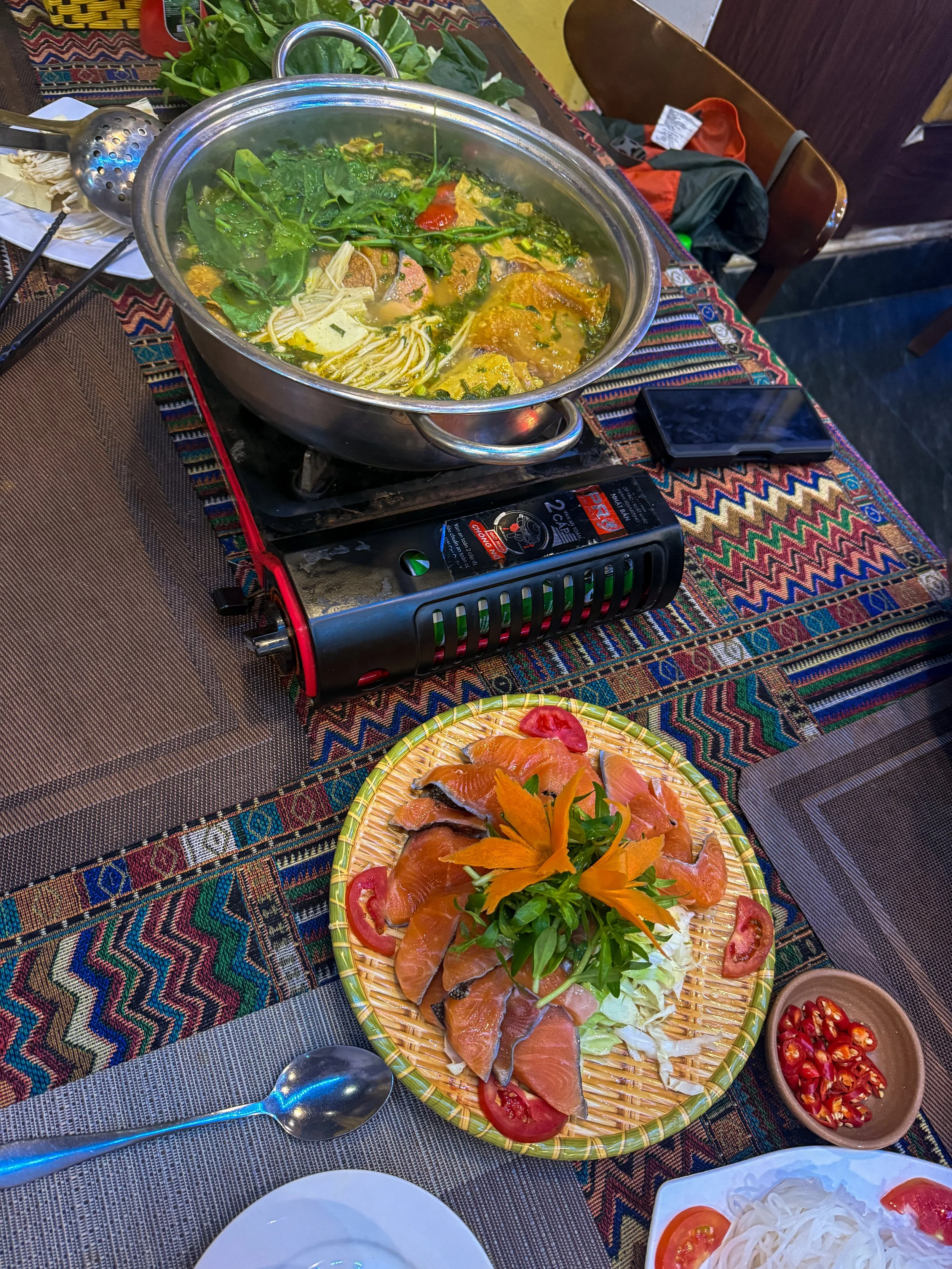30 days in Vietnam (part 2) - North
Тhe Train Street, Hanoi
North vietnam Route:
In my previous blog post, I shared how our Vietnam adventure began, arriving in the vibrant Ho Chi Minh City and soaking into the enchanting Central regions — you can read about it here. This time, we were eager to head north, drawn by the promise of breathtaking landscapes and beautiful nature.
We spent two days in the capital Hanoi before continuing our journey northward to the mountain town of Sapa.
Transportation
Getting around in Hanoi 🛵
How to get from the airport in Hanoi to the old town? The easiest way is using a Grab taxi. Once you land, simply use the Grab taxi app to book a car. You can expect to wait for your driver to arrive within 10 minutes and you will see the estimated price in advance, so you don’t have to guess how much it will cost.
I do not recommending hiring your own scooter in Hanoi. We simply used the Grab app to order scooter taxi hires. For me this is the fastest and most convenient mode of transportation within the cities. You order and pay for the scooter via the App and it takes a few minutes to arrive.
Traveling from Hanoi to Sapa 🚌
For longer trips, the cheapest and the most comfortable options are the buses and trains. Sapa is 314 km north of Hanoi, so we definitely needed something reliable. A popular choice is the overnight bus—though I was sceptical at first, we absolutely loved it. We booked the VIP Sleeper Bus from Hanoi to Sapa (more details below). Link to the VIP Sleeper bus: here.
You can also travel by train, but from what I know, some trains are in poor condition and take much longer. That said, if you travel during the day, the views can be stunning. One train I almost booked was the Chapa Express.
RENT A SCOOTER/MOTORBIKE
As I mentioned in my previous article, to drive in Vietnam, foreigners are required to have a valid International Driver permit (IDP) that conforms to the 1968 Vienna Convention.
You can legally ride scooters with an engine capacity of 50cc or less without a driving license. In our case, we rented an electric scooter which didn’t require a license and it was great for what we needed it.
🎟️ Price: around 100,000VND per day (3.80USD)
Hanoi - 3 days
After a quick one-hour flight from Da Nang with VietJet, we landed in Hanoi, Vietnam’s buzzing northern capital. From the airport, we got a Grab taxi to take us to our Airbnb, right at the border of the Old Town and the French Quarter.
So, Hanoi. We knew it would be busy, but we didn’t expect that busy. Not necessarily in terms of crowds—after all, we’ve seen bigger masses on a Bank Holiday in London—but Hanoi hits you differently. It’s the noise, the buzzing of thousands of scooters, the chaotic traffic, the dense air, the smell of street food, the constant honking. It’s overwhelming—and at least for us, this didn’t change.
So far, I haven’t been to a place that I didn’t like, so I believed I would find things I liked about the city—and to some extent, I did. And I won’t sugarcoat anything.
If you manage to ignore the noise, you start seeing Hanoi’s authenticity. The faded French colonial architecture tells stories of the past. Tall yellow facades with green shutters, old balconies with loads of plants, and narrow alleyways make up a city that is historically interesting yet raw. It’s a place of contrast: intense yet traditional and modern, chaotic yet it has its charming moments.
It was hard for us to relax, but we ended up doing some quite interesting things.
Where to stay in Hanoi? 🏠
It was our first time in Hanoi, so I wanted to stay near the lively area but not right in the epicentre of things. It turns out that even the area we stayed in was quite overwhelming.
My recommendation is not to stay inside the Old Quarter, as during the night it is extremely noisy and busy. Also, it’s hard to get there—even by scooter. You're better off staying just outside the Old Quarter—for example, in the French Quarter—as you’d still be close to all the tourist attractions.
🏠 We stayed at: La Casita Apartment and we paid around €30 a night which was a great value for this place!
places to visit
> Maison Centrale, On our first full day, my boyfriend suggested doing something that requires us to be inside and not outside on the busy street. That’s how we ended up in Maison Central. Once a prison used by French colonists and later by North Vietnamese forces, Maison Centrale gives you a heavy insight into Vietnam’s history. While most of the site focuses on the suffering of Vietnamese political prisoners under French rule, there’s also a section about American POWs held during the Vietnam War. It's a heavy visit but important for context. Once you enter I recommend getting the Audio Guide (an additional 100.000) as the prison is quite big and you can literally listen to the history whilst relaxing on a bench in the respective room .
🎟️ Entry fee: 50.000 dong pp. time spend 1:30-2hrs
> The Train Street. After our visit to the prison, we realized we were just a 15-minute walk from the famous Train Street. To be honest, it wasn’t on my must-visit list, as I knew it could be quite chaotic to get near the train—authorities occasionally restrict access, but some cafés are still allowed to host visitors.
What is the Train Street? It’s a narrow residential street where a railway track runs directly through the middle. You’ll find cafés right along the tracks where you can try an egg coffee or get a beer just inches from the train line. There are multiple train streets around the city—it’s not just one single lane—so check Google Maps for the one nearest to you!
Also, the train timetable changes, so it’s not always easy to find out when the train is passing. I used Facebook by searching for “train street timetable”, and I managed to get a rough idea of the times. Just arrive a bit earlier than the suggested times and ask the café owners for the exact schedule.
> Old Quarter - the beating heart of Hanoi, full alleys, shop houses, and endless street food stalls. Visit early in the morning to see local markets in action—fresh fruits and veggies, seafood, flowers, and loads of shouting. Come back at night to experience its other side: busy sidewalks, street barbecues, live music, and buzzing energy that doesn’t sleep. It was interesting to see but only if you were in the mood.
> Ho Chi Minh Mausoleum & Presidential Area - in contrast to the chaos, this area is refreshingly calm and I really enjoyed walking around. Wide streets, large gardens, and open spaces make it perfect for a relaxing walk. The Mausoleum itself is an imposing Soviet-style monument, and nearby you can visit the Presidential Palace, Ho Chi Minh’s Stilt House, and the iconic One Pillar Pagoda. It is interesting to observe and think about the political style of Hanoi and remember this it is actually a communist country and there is only one party ruling the country - the communist one.
> Hoan Kiem Lake & Ngoc Son Temple - the lake is located right in the center of the city. It is surrounded by a park, and Ngoc Son Temple sits on a small island connected by a bright red bridge. On Sundays, the area becomes a pedestrian zone, and locals come out to walk, skate, dance, and perform music. It’s a great place to observe daily life in Hanoi and see how locals spend their weekends.
🍜 What and where to eat in Hanoi?
Hanoi is known for its traditional Vietnamese cuisine, and while you’ll find a few Western-style cafés, there are way more options for street food and local eateries. Many restaurants have fake reviews online, so I suggest skipping the Google ratings—just check the menu, look at how many locals are eating there, and just go for it. And use common sense of course.
We found plenty of fresh fruit and vegetables at the morning markets, perfect if you’re staying somewhere with a kitchen like we did.
Restaurants in Hanoi that we really enjoyed:
> iVegan - If you're craving something light, raw or plant-based, this spot offers big fresh salads, smoothie bowls, coffee and healthy desserts.
> Phở Thành - local eatery for Pho Soup - extremely tasty pho for just under 50k
> Sala Thai - We also enjoyed a change of flavour and we decided to get some Thai dishes.
Some Local Vietnamese Dishes that I liked:
Phở – The most iconic dish in Vietnam. We had a delicious bowl at Phở Thành, a no-fuss eatery with rich broth and tender meat.
Bún Chả – A Hanoi specialty: grilled pork served in a broth with rice noodles and fresh herbs. Don’t miss this one.
Bánh Mì – A French-Vietnamese fusion sandwich, filled with everything from pork to tofu, crunchy vegetables, and chili sauce.
Bo La Lot - Grilled beef mince wrapped in Vettel leaf
Let’s get to SAPA - The Hanoi to Sapa overnight bus experience
The closest international airport to Sapa is in Hanoi and this is where we were coming from. We chose to travel by the Overnight VIP bus as this seemed the most adequate option for a 6 hrs trip and it was definitely a highlight.
🎟️ We booked it via GetYourGuide and we paid €45 for 2 people per direction.
The trasnfer includes free pick-up from your hotel in Hanoi (if you're staying near the Old Quarter) and takes you to the departure point. Once you arrive in Sapa, they also drop you off directly at your hotel—super convenient.
The buses are comfortable, air-conditioned, and come with Wi-Fi onboard. You're given a small bottle of water and a blanket for the journey. There’s no toilet on the bus, but it stops twice along the way. At the stops, you’ll find shops with reasonably priced snacks and drinks, so no need to stock up beforehand.
We’d read reviews saying snacks weren’t allowed on the bus, but that wasn’t our experience. You can bring snacks—just be mindful of other passengers and avoid anything too smelly or noisy.
💡 A few tips for the bus:
Bring a sleeping mask, even though you have a curtain and shutter in your cabin.
Download books or movies on your phone beforehand, and don’t forget your headphones.
Bring some small cash—you'll need around 3,000 VND per person to use the toilets at the stop points.
Wear comfortable clothes (definitely skip the jeans!) and bring a spare scarf or shawl to use as an extra sheet or cover.
A big one: we arrived in Sapa around 5:30 AM and were still half-asleep. Instead of waiting for the minibus to take everyone to their hotels one by one, we just booked a Grab taxi. For less than €5, we got to our hotel quickly and comfortably.
Sapa - 5 DAYS
So far on our trip, we had mostly visited cities, and I was really craving time in nature.
Vietnam offers plenty of opportunities for that, but the problem is that tourism has left its mark. Many popular places like Ha Long Bay are undoubtedly beautiful but also overcrowded—and for me, that spoils the experience and leaves a bad taste.
So, after a lot of hesitation, we decided to visit Sapa and be adventurous by trying the overnight sleeper bus—which actually turned out to be a great experience!
What is Sapa like?
Sapa is a mountain town in northern Vietnam, close to the border with China. It’s known for its dramatic scenery—huge green hills, rice terraces that stretch along the horizon, and misty peaks. The central area of Sapa is vibrant and full of life. From the serene lakefront to the main streets lined with restaurants, mountain gear shops, and souvenir stalls, there’s something for everyone. You'll also find plenty of spas, cute hotels, and street food options.
But what really makes Sapa stand out are the people.
The region is home to several ethnic minority groups, like the Hmong, Red Dao, and Tay. Their colorful traditional clothing, unique languages, and lifestyles make Sapa feel like a different world—almost like a mix of Chinese and Mongolian influences.
I had heard that Sapa had been ruined by tourism and turned into a place full of Instagrammable spots. But when I saw the photos of endless mountains, rice fields, and the people—it drew me in. I knew that somewhere, far off in the hills, I’d find what I was looking for: authentic Vietnamese nature and culture, untouched by the fast pace of the modern world.
Where to stay in Sapa? 🏠
When it comes to accommodation, Sapa has something for every type of traveler. You can go all out and book a luxurious resort hidden high in the mountains—ideal if you're after breathtaking views and total serenity. The only downside? These places tend to be a bit far from the town center, so you’ll need to rely on transportation to get around.
We personally wanted to stay somewhere that allowed us to explore on foot, so we chose Sapa Praha Hotel—a lovely mid-range option that ticked all the boxes. It’s tucked away in a quieter part of town but still within walking distance to the center, which was convenient and peaceful at the same time.
🎟️ For a double bedroom with breakfast, we paid €45 per night.
Ethnic Groups in Sapa - meet the people who make this region so unique
Black Hmong:
The Black Hmong are the largest ethnic group in the Sapa area. Their culture is rich with tradition, especially when it comes to textile making and natural dyeing using indigo. Their clothing is easily recognizable—dark fabrics, embroidered patterns, and heavy silver jewelry.
They often work as trekking guides and sell handmade crafts in local markets. Despite their popularity with tourists, many still live traditional rural lives, growing rice, corn, and herbs.
Red Dao (Dzao):
The Red Dao people are known for their vibrant red headdresses, elaborate embroidery, and spiritual herbal knowledge. Women often shave their eyebrows and forehead, which is part of their tradition.
One of the Red Dao's most famous contributions is their herbal bath, which uses medicinal plants from the surrounding forest. These baths are not only relaxing but are believed to have healing benefits.
Giay (Dzay):
The Giay people mainly live in lowland areas like Ta Van Village. Their traditional clothing is simpler and more practical than other ethnic groups. They are skilled rice farmers and often host tourists in their homes, offering a peaceful and authentic experience.
Tay:
Though not as prominent in Sapa as in other areas of northern Vietnam, the Tay people are also part of the region’s ethnic mosaic. They typically live in stilt houses and wear dark, simple clothing. Their culture is closely tied to farming and village life.
What to do in Sapa?
First of all, the traffic here is way more bearable than in the cities. So my first piece of advice: rent a scooter and head out into the mountains. The feeling of driving through fresh mountain air with breathtaking views is worth it alone.
As I mentioned, there are many newly built attractions which some visitors seek and love however we wanted to immerse ourselves into the nature and get a closer look into the local’s lives and culture.
Here are a few places we visited and enjoyed:
> Lao Chai Village- one of the most well-known villages near Sapa and home to the Black Hmong people. It lies in a beautiful valley surrounded by rice terraces and mountains. Here you can see traditional Hmong houses, interact with locals, and witness the process of natural indigo dyeing used in their handmade clothes.
Many families run small homestays or roadside cafés where you can stop for coffee with a view. We stopped at Little Sa Café just on top of the hill before entering the village and it offered amazing panorama of the Muong Hoa Valley. The vibe is laid-back, and the village offers an authentic glimpse into rural life.
> Ta Van - Located just about 10 minutes from Lao Chai, Ta Van is more diverse and is home to both Giay and Red Dao ethnic groups. It's a peaceful spot nestled between the river and the rice paddies. There are lots of charming cafés and local homestays here, making it a great base if you want to stay outside of Sapa town. You can also walk between Ta Van and Lao Chai on a scenic trail through the valley.
We had a relaxed lunch here, followed by a short walk along the river. There were many local ladies chasing us to sell us stuff and we were a bit tired for this activity.
🕒 Best time to visit the villages: before noon if you visit during the hot season
> Cat Cat Village - Cat Cat is the most touristy village, located only 2 km from Sapa town. It’s set up more like an open-air museum showcasing traditional life of the Hmong people. You'll see preserved wooden houses, water wheels, and performance areas with traditional dances.
Although more developed and touristy than other villages, the walk down (and up) the hill is interesting and enjoyable. If you are interested in taking photos, you could also rent a traditional costume or dress inside the village.
Considering that there is an entrance fee, this place were definitely one of the more instagramable spots yet because the area was scenic and there were a few waterfalls, for me it was a good experience. There are also many craft stalls and the prices were similar to other villages. However, I’ve read that some people leave disappointed as the place is definitely commersialized.
🎟️ Entry fee: 150,000 VND (€5)
Tip: If you don’t want to climb back up, you can take a buggy from the top of the waterfall stairs back to the main gate.
> Private Walking Tour – although we had seen a lot, we wanted to understand more about daily life of the local ethnic groups, so we booked a tour called ‘Discover the Secrets of the Red Dao People’ led by a local ingenious guide from the Red Dao community .
🥾 As part of the Tour we did:
A 6-7 hour hike through the Sapa rice fields, mountains, and remote trails. We walked through villages which otherwise we would’ve never seen.
We hiked through the Suoi Ho and Ma Tra villages to observe the daily life of the Black Hmong people
visited Ta Phin village, home to the Red Dao people where we did a traditional herbal bath (we booked this additionally)
My recommendation: the walking guide was extremely interesting and informative, however we didn’t enjoy the herbal bath as the place was not as authentic as we expected (so you can skip it)
🎟️ Tour price: 65 USD for two people, including lunch and traditional herbal bath
🔗 Link to the Sapa tour: Hiking in Sapa Tour
> Sapa Market - one of the most authentic experiences is visiting the local market, located right in the heart of town. It’s a chance to meet locals and see what they produce and eat. Apart from fruits, vegetables and meat, the ethnic minority people sell homegrown herbs, teas, wild forest honey, nuts, dried mushrooms, and even natural remedies passed down through generations.
You’ll find Red Dao herbal blends for teas or baths, and fragrant seasonings. Take your time to explore, ask questions, and support the local communities by buying directly from them. It’s a great place to stock up on healthy ingredients for a really good price. It would be really worth it paying the extra check in bag to take stuff home.
What and where to eat in Sapa?
The central area of Sapa town has tens of restaurants which serve mainly local dishes with some international options. If you are a foodie, it’s a great place to experience northern Vietnamese mountain cuisine, especially dishes made with fresh local ingredients like salmon, sturgeon, black chicken, and forest vegetables.
Here’s what to eat in Sapa and where to find it:
> Yummy Restaurant - there are a few special things about this place: it is extremelly cozy as it is a smaller family-owned restaurant and from the balcony you get a beautiful panorama mountain view. Another thing was the food of course. The two dishes we loved here were: Grilled Sturgeon on a hot plate and the Vegetable Curry served in a whole coconut - a delight! Also, the prices in this place were very affordable.
> Sapa Story Restaurant - on one of our last days we craved some western food and this place did the job - grilled chicken breast with vegetables and potato mash!
> Hot Pot - my absolute favourite meal which I could eat every second day. It’s a huge hot pot with stock served with loads of vegetables, mushrooms, tofu, and noodles. One pot is more than enough for 2 people (check the menu for serving suggestions). The most popular options are:
Salmon Hot Pot (Lẩu Cá Hồi): Yes, salmon is very popular in Sapa as thanks to the cooler climate Sapa farms its own salmon. The fish is incredibly fresh and tender.
Sturgeon Hot Pot (Lẩu Cá Tầm): another local delicacy where the fish is very - a must-try if you want to try some more rare fish.
> Where to eat it: almost every restaurant in Sapa offers hotpot; we got a super tasty one at the Hmong Restaurant
Bonus activity in sapa:
If you have more time, consider taking the scenic Muong Hoa mountain train and cable car up to Fansipan Peak (3147m), the highest point in Indochina, also called The Roof of Indochina. Thanks to the modern cable car system, reaching the summit has become accessible to travellers of all ages and fitness levels and you don’t need a guide. However, if you decide to treck all the way up, the advice is to hire a local guide as the hike is quite challenging.
🔗 For up to date information refer to the official page: Fansipan Legend Sunworld
🇻🇳 Vietnam Trip Summary (30 days)
🗓️ Itinerary Breakdown
(You can cut this itinerary in half for a 2-week trip)
Days 1–4: Ho Chi Minh City
Days 4–10: Da Nang (with day trips from here)
Days 10–18: Hoi An (attended a yoga retreat)
Days 18–21: Hoi An (continued stay)
Days 21–24: Hanoi
Days 24-29: Sapa
Days 29-30: Departure from Hanoi
💸 Budget Overview
Accommodation - €30 to €80 per night (depending on location and comfort level)
Food and drinks - €15–25 per meal for two at mid-range restaurants
Much cheaper at local eateries and street food stalls - a meal could cost €2
Flights - around USD $60 per internal flight per person
Transportation :
VIP Sleeper Bus (Hanoi – Sapa – Hanoi): €90 total for 2 people (round trip)
Airport taxi transfers - up to €10 per way
Grab bike hire - up to 1 per trip
Scooter rental - €3-5 per day
Tours & Attractions - Prices vary depending on type (group - more affordable; private - higher cost)
If you're planning a trip to Vietnam, I hope this gives you a clearer picture and some fresh inspiration! Have fun 🇻🇳




